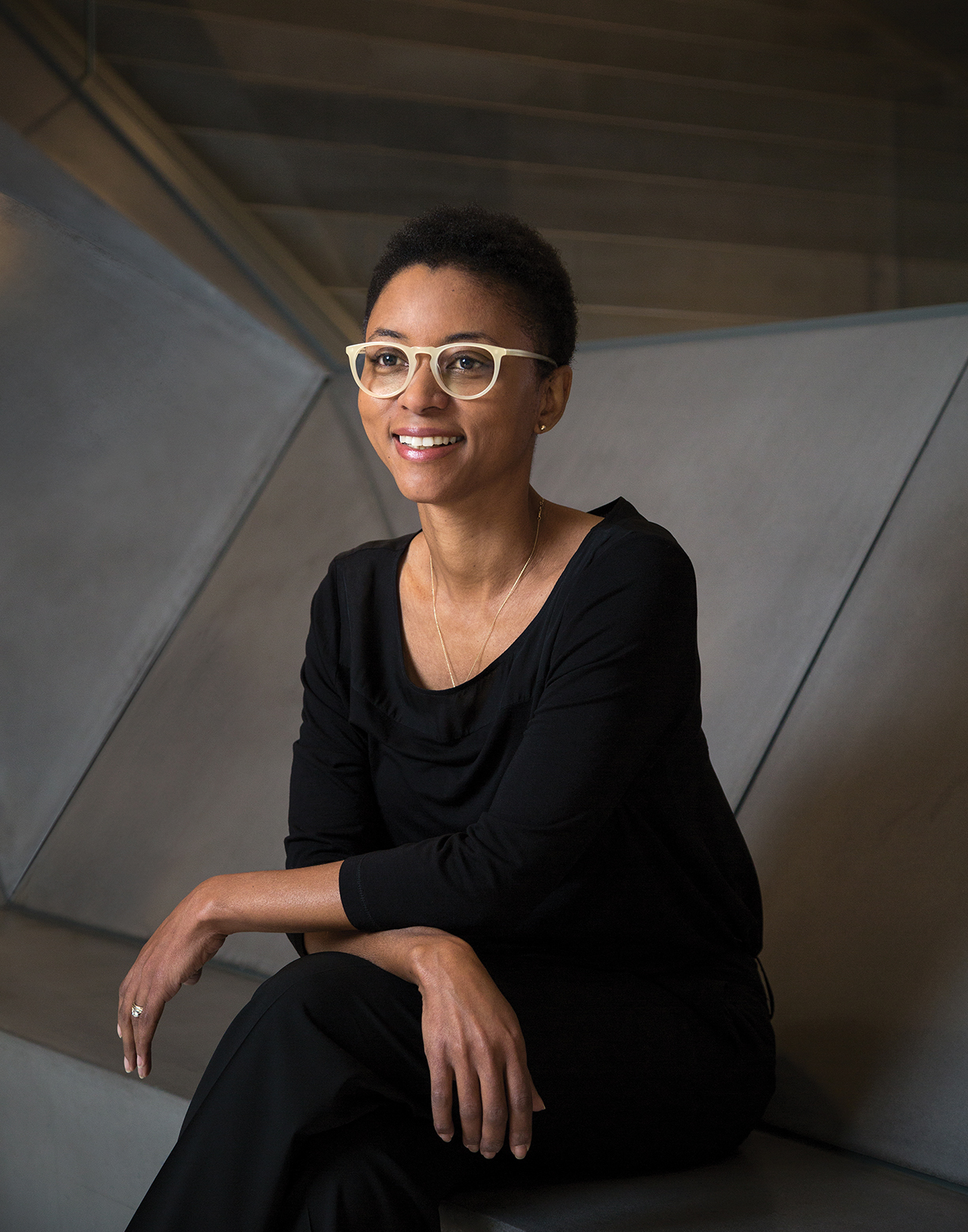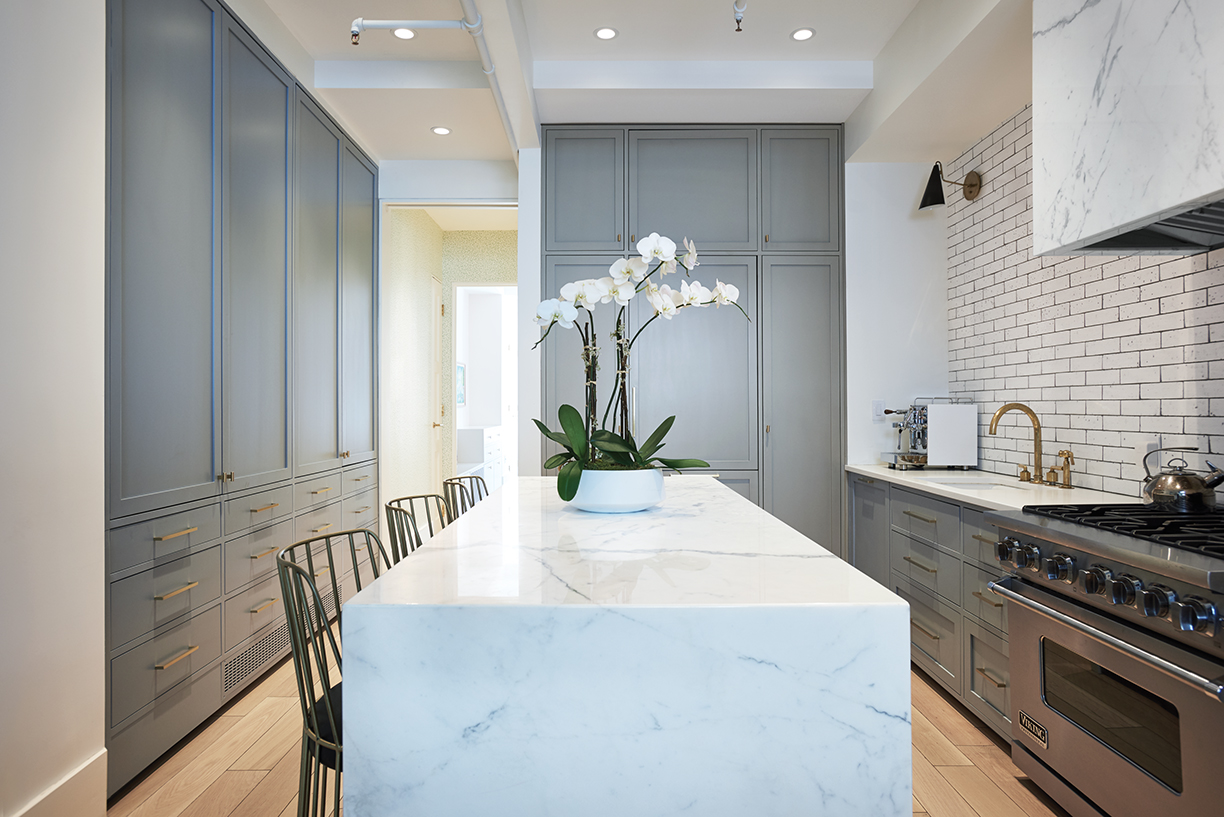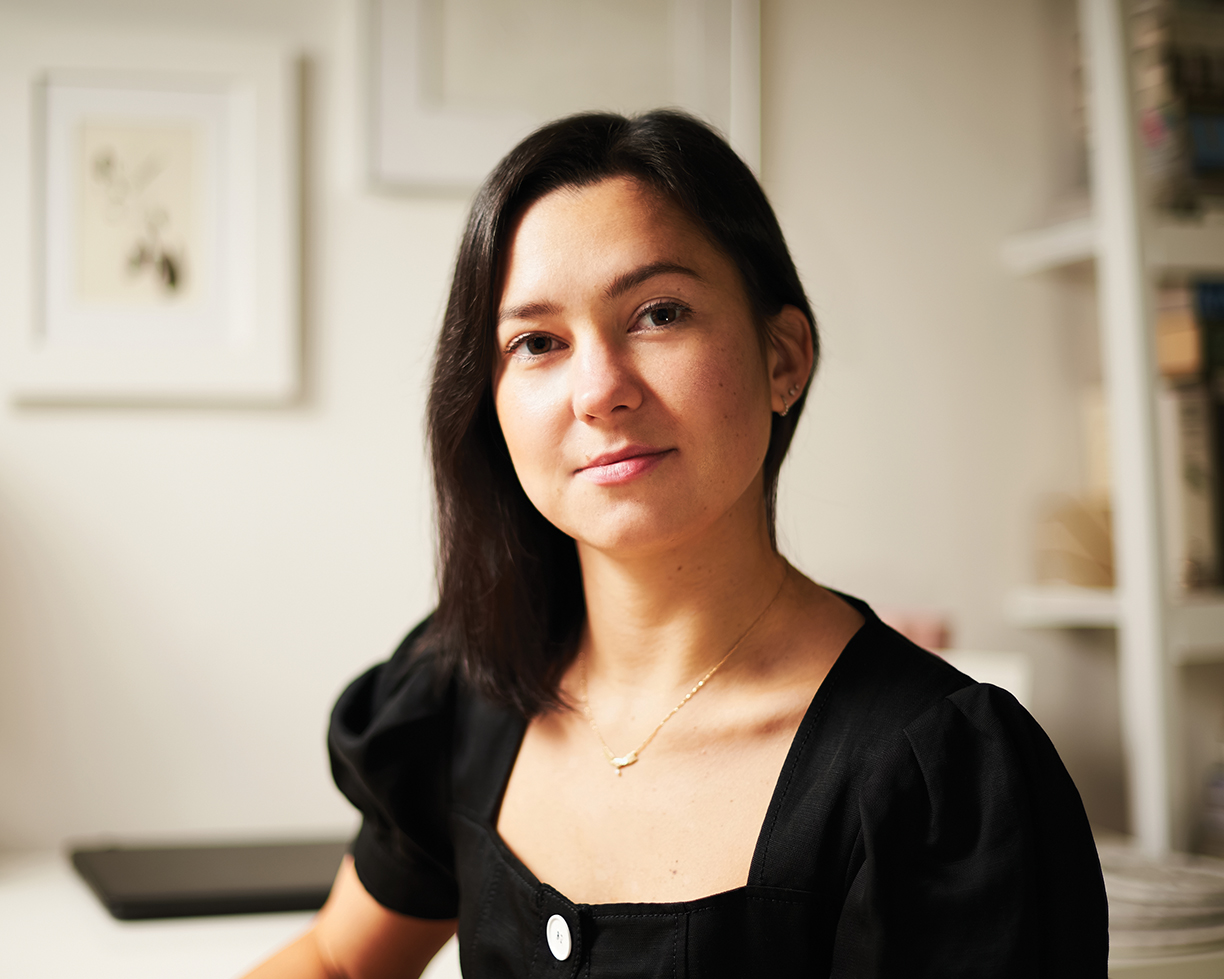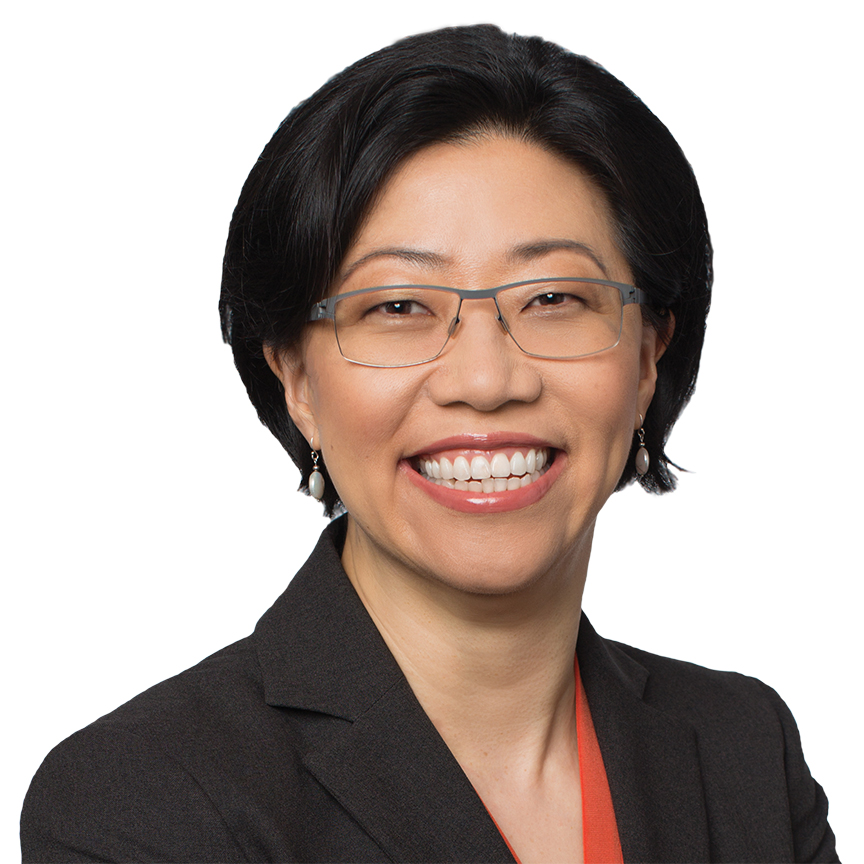Cover image: ©istockphoto.com / Rost-9D
In the male-dominated field of architecture, women struggle to overcome institutionalized barriers to gender equity.

At her eponymous New York City studio, architect Nina Cooke John creates sophisticated spaces through “high-impact” residential architecture.

Nina Cooke John photo by Ball & Albanese; Below photo by Lisa Russman Photography.
Courtrooms are increasingly occupied by women attorneys and even judges, and world-class hospitals have no shortage of women physicians. But, regrettably, the profession of architecture remains nearly as male-dominated as the halls of the U.S. Senate or Fortune 500 boardrooms. In a field that demands both artistic achievement and construction expertise, gender equity has been painstakingly slow.
There are certainly some bona fide celebrity women architects, such as Jeanne Gang who is dramatically redefining the skyscraper, and Elizabeth Diller whose firm of Diller Scofidio + Renfro created The High Line in New York and The Broad in Los Angeles. They follow Zaha Hadid, the trailblazing Pritzker Prize-winning designer who passed in 2016. The prominence of these women has inspired a new generation of female architects, but that path is still laden with roadblocks.
Despina Stratigakos, Ph.D., vice provost for inclusive excellence and professor of architecture at the University at Buffalo, states, “Architecture is a male-dominated profession by design,” and explains that there was strong pushback when women first started entering the field 140 years ago. “The justifications given then for excluding them from practice, revolving around women’s negative ‘feminine’ influences, became embedded as core values of the professional culture,” says the professor, who reports that a deep-seated bias against women’s abilities continues today.
Stratigakos’ 2016 book, Where Are the Women Architects? was partly inspired by the emergence of a new movement seeking greater gender equity in the profession. “I wanted to raise awareness of this long-standing question and of the voices of activists pushing for answers today,” she explains. “Women have long advocated for greater diversity in architecture, but too often have been ignored by the profession’s leaders,” says Stratigakos.
The professor cites statistics that reflect approximate gender parity among students enrolled in accredited architecture programs in the U.S. but that is not, however, indicative of women’s advancement in the profession after graduation. “Although the gap has shrunk between the numbers of men and women studying architecture, racial and ethnic disparities are slower to change,” adds Stratigakos, who notes that Black women are sorely underrepresented in architecture schools.
While challenges for women of color can be dispiriting, voices like Nina Cooke John provide inspiration for those entering the field. The Jamaican-born architect, whose New York-based Studio Cooke John specializes in “high-impact” residential architecture — she explains the concept as maximizing and customizing every square inch of the spaces she describes as “machines for living” — and public art.
Cooke John, whose impressive resume includes degrees from Cornell and Columbia, was included in Dwell magazine’s “13 Extraordinary Women in Design and Architecture You Need to Know.” Following faculty positions at Syracuse University and Parsons School of Design, she has returned to Columbia to teach architecture, making the professor well suited to counseling young women entering the field. Informed by her experience as one of the few Black women in her class at Cornell, she advises, “It’s important to speak out and create your own community because support is paramount to your success.” She suggests that if students who feel isolated cannot find that support on campus, they should reach out to practitioners or minority-based professional associations for mentorship.
After practicing and teaching extensively, Cooke John created her own firm with another woman architect — both mothers of young children who appreciated the flexibility most large firms could not provide — and eventually went solo. She reports, “For many women, it’s about finding your voice and creating an environment that’s difficult to find in a male-dominated firm.” Suggesting women tend to approach the profession differently, Cooke John reports, “When women interact with clients, it’s not so often about ego but listening to the clients and responding to their needs.”
“We interact with the built environment constantly, and while some people view it as in the background, it’s really the foreground of everything we do,” says Cooke John, who adds, “When people engage with one another in public spaces, community-building is much stronger.” Her foray into public art installations further advances her philosophy of placemaking, which transforms relationships between people and the human-made environment.
Julia Gamolina is director of strategy at Trahan Architects, an international firm with offices in New Orleans and New York, whose portfolio includes prominent educational, sports and performing arts venues. She is also founder and editor-in-chief of Madame Architect, an online magazine that celebrates the achievements of women in the field and serves as a digital mentor to young professionals. Explaining that challenges for women are exacerbated by influences beyond their own architectural firms’ cultures, Gamolina observes, “Most professions dealing with the built environment, such as commercial real estate, construction and engineering, tend to be even more male-dominated than architecture.”
The editor of Madame Architect not only laments the lack of gender equity in her industry, but suggests progress is unlikely to be swift. “It’s slow to change because architecture itself takes a long time, from financing and government approvals to design and construction,” explains Gamolina, another accomplished Cornell alumna. She reports the numbers of women in leadership positions is more anemic than overall female participation in the industry, but notes some women start their own firms after becoming mothers.
Other women, reports Gamolina, drop out of the rigorous profession when they have their first child because employers do not offer sufficient flexibility. “It’s not a motherhood problem at all,” insists the architect and journalist, who maintains that lack of flexibility applies equally to fathers and even caretakers of elderly parents. One potential dividend from the pandemic was the recognition by employers that staff can be fully productive working outside the office.
Gamolina believes young women need to understand there are exciting roles awaiting them in architecture beyond design itself, and points to her own director of strategy position at Trahan Architects. “Madame Architect showcases all the career possibilities within the field,” she explains, citing specialties in administration, communications and marketing.
Rosa Sheng is a principal at SmithGroup, whose 15 offices create cultural centers, master-planned cities and mixed-use projects around the globe. Sheng also serves as her firm’s director of justice, equity, diversity, and inclusion, and is founding chair of the Equity by Design Committee created by the San Francisco chapter of the American Institute of Architects (AIA).

Julia Gamolina is director of strategy for Trahan Architects — the Coca-Cola Stage at Atlanta’s Alliance Theatre is a signature project — and is also editor-in-chief of Madame Architect.

Photo of Julie Gamolina by Lily Olsen; Theater photo by Leonid Furmansky.


Equity by Design has conducted three pivotal research studies with the most recent, in 2018, involving a survey of more than 14,000 architecture school graduates. For Sheng, therefore, anecdotal stories from her colleagues are supported by hard data. Her research reveals several “pinch points” in the careers of women architects: pathways to licensure, access and opportunities to leadership positions, caregiving navigation/reconciliation, and pay equity for similar roles or positions. Her committee’s early work focused on the “missing 32 percent,” referring to the attrition rate between women architecture school graduates and those who became licensed.
After giving birth to her second child during the Great Recession, Sheng was experiencing one of those pinch points. “I felt like I couldn’t be a good parent or a good architect,” she recalls defeatedly, and adds, “People say there are barriers, but you don’t believe it until you experience them.” In challenging times, women leave the profession, something Sheng herself considered even after years of success. But her work with Equity by Design has provided a new purpose to complement her passion for the discipline. “It’s that feeling of being swept away by the excitement, like, ‘Wow! There’s something here we can influence and help to change,’” explains the activist architect.
Sheng reports, “In addition to Equity by Design, there are many more women in architecture leading efforts to share experiences, celebrate achievements for justice and equity in the profession, and inspiring a more diverse demographic of architectural practitioners.” She cites organizations like 400 Forward, a nonprofit that inspires women of color to become architects.
“Your success will not be determined by your gender or your ethnicity, but only on the scope of your dreams and your hard work to achieve them.” This is not just any motivational trope, but the words of the great Zaha Hadid, who overcame challenges on both fronts.
Rosa Sheng, a principal at SmithGroup — the UC Davis Teaching and Learning Complex is a recent project — was founding chair of the Equity by Design Committee.
Photo by Scott R. Kline; Building renderings courtesy of SMITHGROUP.



Leave a Reply